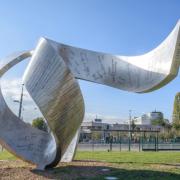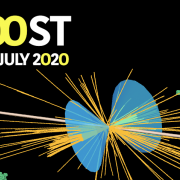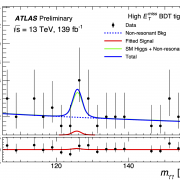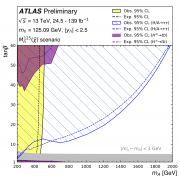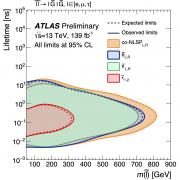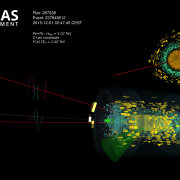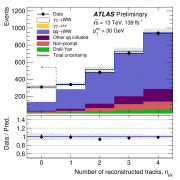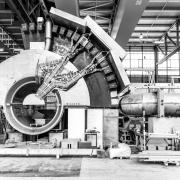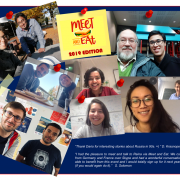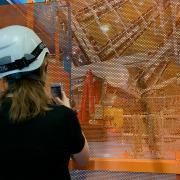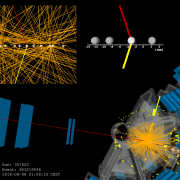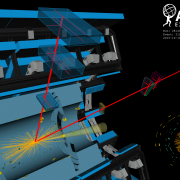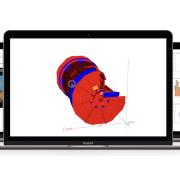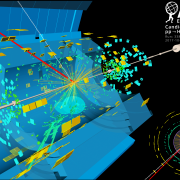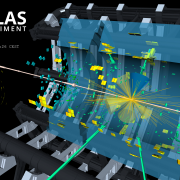Access to Collaboration Site and Physics Results
Updates tagged: “Physics Results”
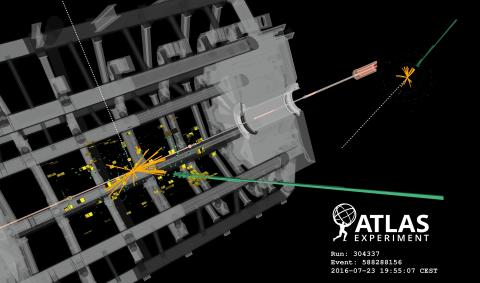
Searching for new symmetries of nature
The fundamental forces of nature are intimately related to corresponding symmetries. For example, the properties of electromagnetic interactions (or force) can be derived by requiring the theory that describes it to remain unchanged (or invariant) under a certain localised transformation. Such an invariance is referred to as a symmetry, just as one would refer to an object as being symmetric if it looks the same after being rotated or reflected. The particular symmetry related to the forces acting among particles is called gauge symmetry.
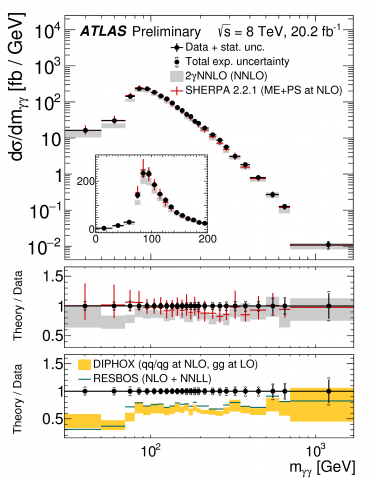
Improving our understanding of photon pairs
High-energy photon pairs at the LHC are famous for two things. First, as a clean decay channel of the Higgs boson. Second, for triggering some lively discussions in the scientific community in late 2015, when a modest excess above Standard Model predictions was observed by the ATLAS and CMS collaborations.
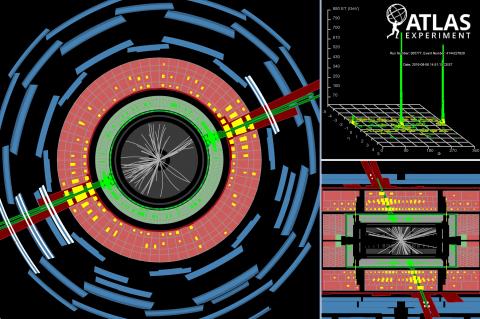
ATLAS highlights from Moriond
At this year’s Rencontres de Moriond, the ATLAS collaboration presented the first results examining the combined 2015/2016 LHC data at 13 TeV proton–proton collision energy. Thanks to outstanding performance of the CERN accelerator complex last year, this new dataset is almost three times larger than that available at ICHEP, the last major particle physics conference held in August 2016.
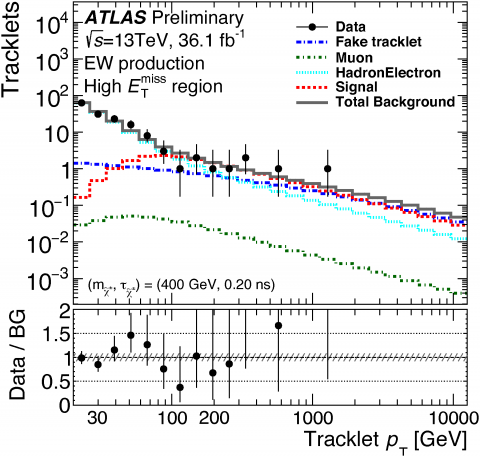
Quest for the lost arc
Nature has surprised physicists many times in history and certainly will do so again. Therefore, physicists have to keep an open mind when searching for phenomena beyond the Standard Model.
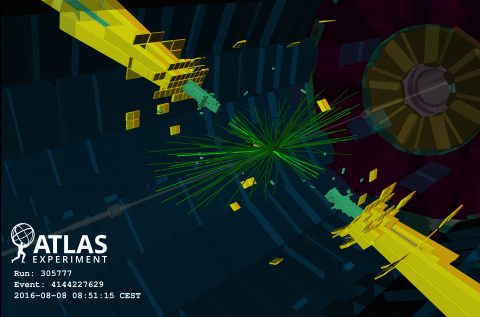
Particle-hunting at the energy frontier
There are many mysteries the Standard Model of particle physics cannot answer. Why is there an imbalance between matter and anti-matter in our Universe? What is the nature of dark matter or dark energy? And many more. The existence of physics beyond the Standard Model can solve some of these fundamental questions. By studying the head-on collisions of protons at a centre-of-mass energy of 13 TeV provided by the LHC, the ATLAS Collaboration is on the hunt for signs of new physics.
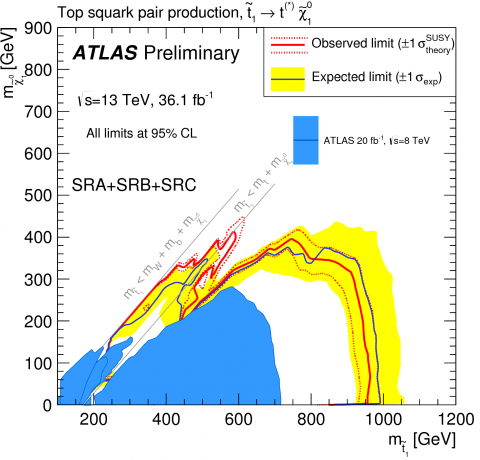
Searching for signs of the “stop”
In new results presented at the Moriond Electroweak conference, the ATLAS Collaboration has sifted through the full available data sample of the LHC’s 13 TeV proton collisions in search of a specific SUSY particle: the heavy partner to the top quark, called the “top squark” or “stop”
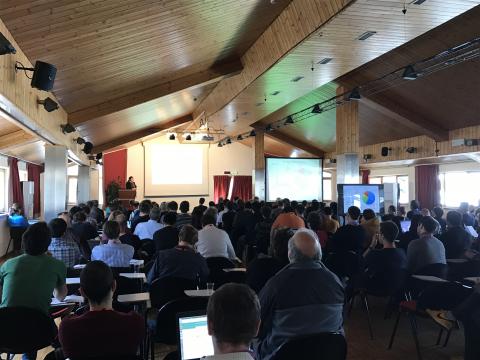
ATLAS to present new results at Moriond
Every March for the past 50 years, particles physicists have been heading to the mountains. The terminus of this migration? Les Rencontres de Moriond, one of the year’s first major conference for high-energy physics.
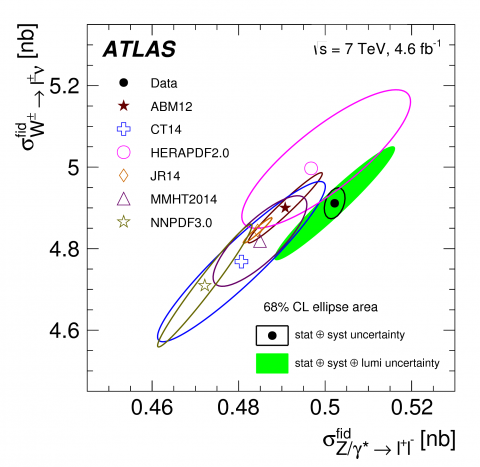
How strange is the proton?
What precision measurement of the inclusive W+, W− and Z/γ∗ production cross sections can tell us about the true nature of the proton.
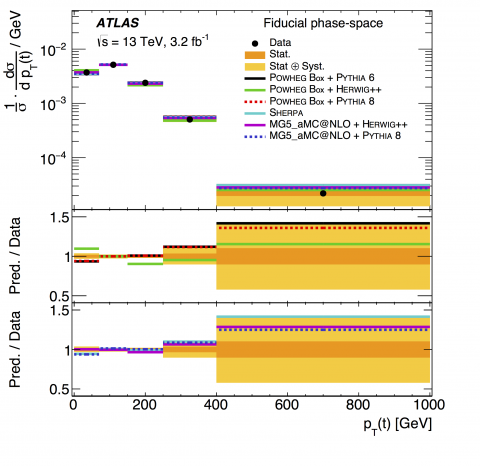
Return of the top quark!
For the first time, ATLAS has measured the kinematics of the top quark and of the tt̅ system in 13 TeV events containing two charged leptons, two neutrinos and two jets (called “dilepton” events).
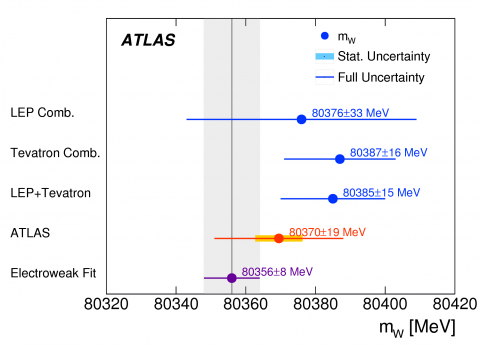
Measuring the W boson mass
The ATLAS collaboration is now reporting the first measurement of the W mass using LHC proton-proton collisions data at a centre-of-mass energy at 7 TeV. The ATLAS result matches the best single-experiment measurement of the W mass performed by the CDF collaboration.


